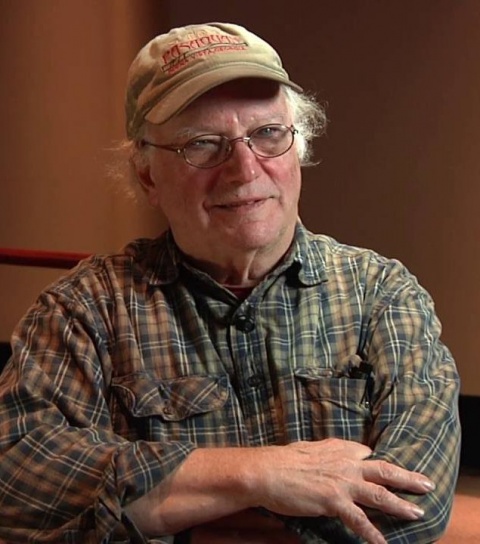Columbia College | Columbia University in the City of New York
Arthur S. Rosenbaum ’60, Grammy-Winning Preserver of Folk Music and Painter

Rosenbaum won a Grammy Award for best historical album for Art of Field Recording Volume I: Fifty Years of Traditional American Music, released in 2007 by Atlanta-based Dust-to-Digital. It was the first of two compilations of Rosenbaum’s recordings documenting American musical traditions as performed at work camps and church gatherings, and in rural living rooms.
The pop music website Pitchfork called the release “revelatory” and “an indispensable counterpoint to Harry Smith’s Anthology of American Folk Music,” a compilation of 84 recordings of American folk, blues and country music made and issued 1926–33 that was released in 1952 and played a major role in the 1950s folk music revival.
Rosenbaum’s work built upon the field recordings of ethnomusicologist Alan Lomax and was inspired by folk singer Peter Seeger. Rosenbaum wrote that Seeger told him, “Don’t learn from me, learn from the folks I learned from,” and called that “good advice, and the kick in the rear that got me going.” His folk music field work in the South and Midwest resulted in 14 documentary recordings.
A performer on a variety of folk instruments, Rosenbaum appeared at numerous folk festivals, both solo and with groups, and cut three banjo/vocal LPs and CDs.
Born on December 6, 1938, in Ogdensburg, N.Y., Rosenbaum was raised in Indianapolis, where he became fascinated by traditional music and contemporary folk stars. He became an expert banjo player and tuner. An art history major at the College, Rosenbaum earned a master’s in painting and sculpture from SOA in 1961. He worked in France on a Fulbright in painting and also held a Fulbright Senior Professorship in Germany.
After teaching studio art at the University of Iowa, Rosenbaum moved to Georgia’s Lamar Dodd School of Art in 1976. With Athens as a home base, he and his wife, artist Margo Newmark, made many field recordings of Georgia musicians and gave them opportunities to play before new audiences.
“Art was on a mission to go out and meet people who made music,” Lance Ledbetter of Dust-to-Digital said of Rosenbaum, according to The Guardian. “He recorded their songs, learned them on his banjo, became their friend, painted them in his murals, and invited them to perform at art galleries, museums, concert halls and folk festivals.”
As a painter, Rosenbaum was inspired by Cezanne and the German Expressionist Max Beckmann. Some of his works are large murals on historical themes. Other paintings and drawings are allegorical works in which the old and the new coexist and clash.
Among his exhibitions were the New Orleans Triennial and the Corcoran’s 41st Biennial of American Painting. His works are in many collections, including the New Orleans Museum of Art, the Columbus (Ga.) Museum, the Georgia Museum of Art and the Smithsonian National Museum of American Art. A major retrospective, “Weaving His Art on Golden Looms: Paintings and Drawings by Art Rosenbaum,” was held at the Georgia Museum of Art in 2006.
Rosenbaum wrote and illustrated Folk Visions and Voices: Traditional Music and Song in North Georgia (1983), Shout Because You’re Free: The African American Ring Shout Tradition on the Coast of Georgia (1998) and The Mary Lomax Ballad Book: America’s Great 21st Century Traditional Singer in (2013), as well as three instructional books on traditional banjo styles.
In 2003, Rosenbaum received the Governor of Georgia’s Award in the Humanities.
In addition to his wife, Rosenbaum is survived by a son, Neil; brother, Victor; and sister, Jenny.
— Alex Sachare ’71
Issue Contents
Published three times a year by Columbia College for alumni, students, faculty, parents and friends.
Columbia Alumni Center
622 W. 113th St., MC 4530, 6th Fl.
New York, NY 10025
212-851-7852
cct@columbia.edu
Columbia Alumni Center
622 W. 113th St., MC 4530, 4th Fl.
New York, NY 10025
212-851-7488
ccalumni@columbia.edu

